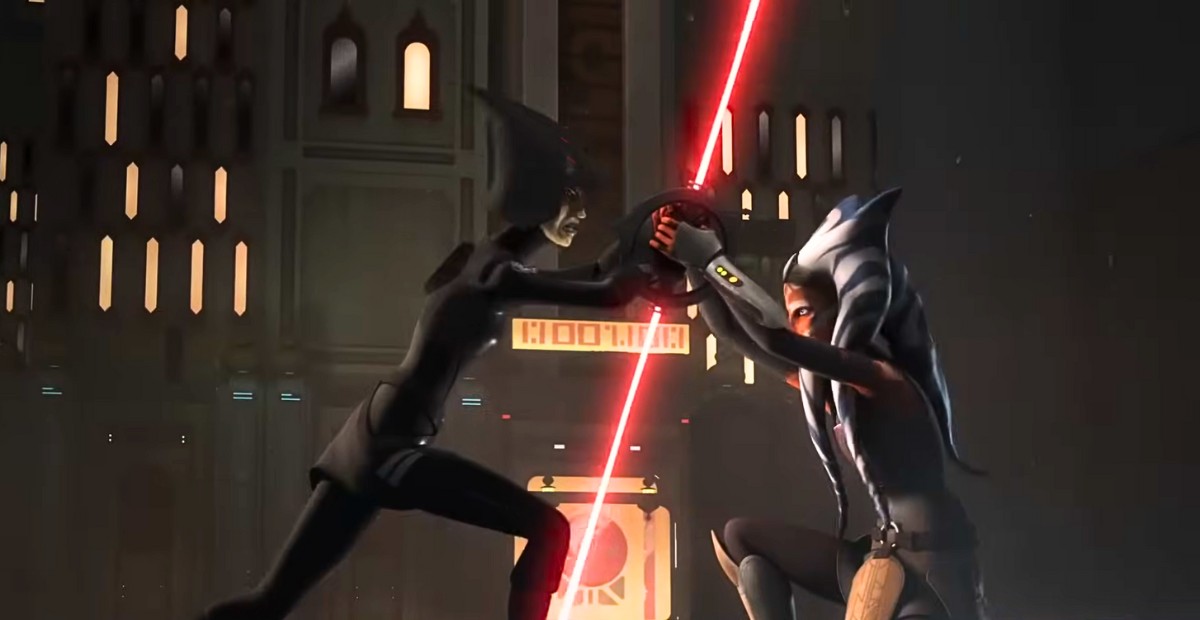In Star Wars Rebels, there’s a short but striking moment where Ahsoka Tano turns off the Seventh Sister’s spinning lightsaber using the Force. It happens fast, but it’s one of those rare techniques that really stands out. Let’s break down how she pulled it off, why it’s so uncommon, and what makes it even possible in the first place.
Why Lightsabers Can Even Be Shut Down Like That
Lightsabers have physical activation systems – usually a stud, button, or switch on the hilt. Some are built with pressure grips that deactivate the blade when not being held. Others might have locking mechanisms so they can stay ignited while thrown. Even though they’re tied to the Force user, the blade is still controlled by a mechanical feature.
That means, in theory, someone powerful and precise enough with the Force could manipulate that mechanism remotely and turn the weapon off. But getting there during combat is a different story.
Defenses Are Always Up During Fights
Force users train early on to project a Force barrier, a kind of invisible shield that protects both themselves and their weapons during combat. It’s a basic defensive skill, something Jedi and Sith are expected to do automatically the moment a duel starts.
These barriers block outside Force interference – including attempts to turn off a lightsaber. Overcoming them takes more than just power; it also takes focus, timing, and knowing your opponent isn’t ready to stop you. That’s why this kind of move almost never happens during fast-paced, evenly matched lightsaber fights.
So, Why Ahsoka Could Pull It Off
Ahsoka didn’t just react quickly – she acted with total control. She grabbed the Seventh Sister’s hilt first, which meant the Inquisitor couldn’t keep attacking or stop what came next. Then, Ahsoka used the Force to deactivate the weapon, not by pressing the button, but by targeting it directly through telekinesis.
The reason this worked is simple: Ahsoka was stronger, and her opponent wasn’t fully focused on defense in that moment. When there’s that kind of imbalance – like in this case or when Yoda disabled Ventress’s sabers in The Clone Wars – a direct Force action like this becomes possible. But only under the right conditions.
It’s Rare, But It’s Been Done Before
Ahsoka’s move wasn’t the first time we’ve seen this kind of thing happen. It’s just extremely rare – and it usually comes from Force users operating way above their opponent’s level.
- Yoda vs. Ventress – In The Clone Wars episode “Ambush”, Ventress tries to strike down King Katuunko. Yoda doesn’t just stop her – he casually shuts off her lightsabers and pulls them away with the Force. She doesn’t even have time to react.
- The Son of Mortis – In The Clone Wars, the Son shows that he can disable lightsabers effortlessly. He’s a being with overwhelming Force power, and when he acts, there’s nothing the others can do to stop him.
What these moments have in common is simple: they happen when one fighter is completely outmatched or caught off guard. It’s never in the middle of a fair fight – it’s always someone overwhelming the other with speed, power, or timing.
How Lightsaber Designs Help Prevent This
Because this vulnerability exists, lightsaber users eventually developed ways to stop others from taking advantage of it.
One approach was hiding the activation switch. For example, Asajj Ventress’s lightsaber had its activation stud concealed within the hilt. Unless someone knew exactly where that button was, it’d be nearly impossible to find or press it with the Force.
Another was the Force-activated hilt, a rare but clever solution. These sabers had no physical switch at all. The blade could only be activated through the Force – and in some cases, only by channeling a certain alignment, like the dark side. That way, even if an enemy got their hands on it, they couldn’t turn it on or off without the proper Force connection.
Both design choices show just how seriously lightsaber users took the risk of someone interfering with their weapon mid-fight.

